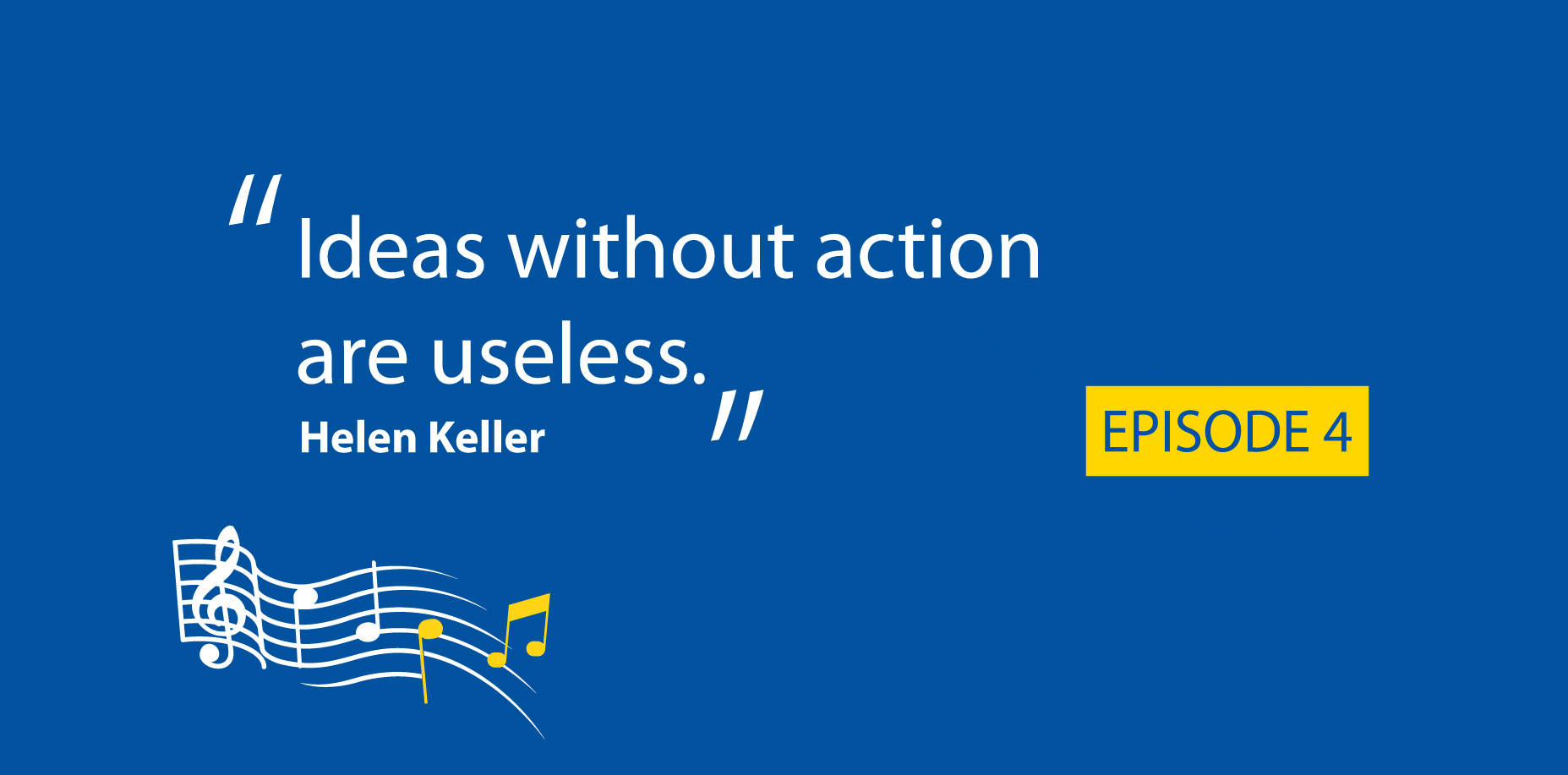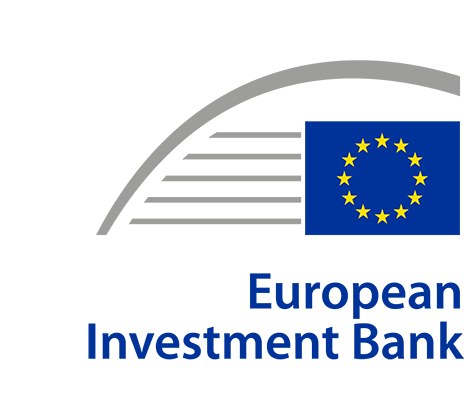Episode 4: Implementation

A discussion with Oana Dordain, Deputy Head of Unit and Ieva Zālīte, Policy Officer of the European Commission’s DG REGIO (Directorate-General for Regional and Urban Policy), hosted by Chiara Continenza from the fi‑compass team at EIB.
This is Calling the tune, a new fi‑compass podcast series on financial instruments under the new Common Provisions Regulation. My name is Chiara Continenza, from the fi‑compass team at the EIB. “Ideas without action are useless,” wrote the activist Helen Keller and today, inspired by this quote, we are discussing how the new CPR supports the implementation of financial instruments.
I am pleased to welcome back today Oana Dordain, and Ieva Zālīte from DG REGIO to discuss the new regulation and how it affects financial instruments.
Oana, Ieva welcome back!
Oana: Thank you Chiara, it’s good to be back.
Ieva: Hello everybody.
So, Ieva, let's first look at the article on implementation of financial instruments. Perhaps we can start with the two first paragraphs that describe the implementation options. I think it is a case of continuity in terms of the different options available, right?
Ieva: Indeed Chiara, you are absolutely right. In this respect, the regulation did not change, and we keep the same implementation option. For our listeners who are new to our financial instruments and our rules, let me explain these options one by one.
Yes, that would be great!
Ieva: The first paragraph speaks about the implementation option where the managing authority undertakes implementation of financial instruments directly. There is no formal set up of the fund, and these financial instruments can be guarantees and loans. This also means that the managing authority has the necessary competence to appraise the loan application or to decide on the level of guarantee necessary to cover the risk for the loan that for example an enterprise would borrow from a bank.
And what about the second implementation option?
Ieva: Another option, the second implementation option, which is described in the second paragraph, is where there is a formal set up of the fund and it is implemented by the body implementing the financial instrument. And here, the same as in the past, we may have two types of structures: financial instruments set up with the holding fund, where the specific product fund will be operating within that structure, or single layer instruments with individual specific product funds.
And I think this paragraph also describes how the resources can be contributed to the financial instrument, right?
Ieva: The provisions say that the programme resources can be invested into the capital of a legal entity or they can be placed in a fiduciary account or a separate block of finance. Here I would like to draw the attention of our listeners to the point when we say that the programme resources can be invested in the capital of a legal entity, so it means that these programme resources will take shares in that legal entity and these resources have to be further invested in final recipients. It is important to emphasise that programme resources cannot be used to recapitalise these entities, so there should be evidence, or as our auditors would call it, an audit trail that demonstrates that the money is received and is further used in investments for final recipients.
And what about fiduciary accounts of separate blocks of finance?
Ieva: It means that the body implementing the financial instrument can open an account in their name and on behalf of the managing authority, or set up financial instruments, as a block of finance, which then this fund manager will be managing.
In terms of selection, the new regulation dealt with this very briefly, without, for example specific reference to the different types of entity that may be appointed for example? However, the regulation has been developed further. Could you perhaps run us through these changes?
Oana: The Commission’s intention was to let this article as simple as possible and not to give here indications about the methods of selection of the bodies implementing the financial instruments. However, during the co-legislative process, the Member States felt the need to have the provisions back. So now, the final version of the CPR contains the modalities of how a managing authority may directly award a contract for implementation to a body implementing a financial instrument, and it contains also the provisions from the Omnibus regulation. There is however, a change compared to the current legal framework, and this refers to the absence of article 7 of the Commission delegated regulation 480 from 2014, because the Commission considers that the managing authority has anyway to entrust the implementation to a body, which is able to implement the financial instrument. I would like to say to our listeners that the Commission brought additional clarifications to the Member States in relation to the selection, and this can be found on the website of fi‑compass, from the Knowledge Hub events on Selection.
Yes, indeed, you correctly point out that fi‑compass recently published a Knowledge Hub report on selection and we will add the link to the transcription of this podcast on our website as well. Now, Oana, let’s talk about the Annex that sets out the requirements for two documents – the strategy document required and the Funding Agreement. What are the key elements required under these Annex?
Oana: I would like to remind to our listeners that the strategy document has to be done when there is a direct implementation of the financial instruments by the managing authority. The funding agreements have to be signed by the managing authority with the bodies implementing the financial instruments and this is a very important document. One of the main elements is related to the investment strategy. The investment strategy had already to be described in big lines during the ex-ante assessment, but now at the level of the funding agreement, there should be indicated the exact investment strategy for the implementation of the financial instrument. There are also other provisions which refer to the obligations of the managing authority for the implementation such as audit, monitoring or publicity provisions.
Perfect, Oana, thanks a lot. That was really clear. So if I understand correctly, there are no major changes here based on experience from previous programmes. Ieva, in paragraph four and five of the article on implementation, we find the rules regarding Member State liability and also the requirements in relation to selection of final recipients. What do our listeners need to know regarding these two provisions?
Ieva: Indeed, these are important provisions. If we look at paragraph four, it clarifies that the financial liability of the managing authority should not exceed the amount of programme contribution which is committed in the funding agreement. Of course, it doesn’t exclude that the managing authority agrees to have other legal commitments outside the programme resources, with the financial intermediary. It is also the case now. Also if we look in the paragraph five, it describes that support provided to the final recipients, should take account of the programme objectives, so it translates these requirements into the eligibility criteria. The support should be also based on the business plan or another equivalent document, which demonstrates that the investment is financially viable. It should be clear from the start, that the support will be used to contribute to the programme’s objectives.
What about the requirements for a transparent process to select final recipients – does this require a particular approach?
Ieva; Yes, indeed. Paragraph five also speaks about the selection of final recipients, which should be transparent and should not cause conflict of interests. It means that the general principles, respected by the normal banking practice, should be applied. Transparency and avoidance of conflict of interest are basic principles of any selection process, including for financial institutions. In addition, thee financial institutions are governed by a number of legislative provisions, as well as by guidelines and regulations issues by the supervisory authorities. When the managing authorities select the bodies, which will implement financial instruments with programme resources, they put great reliance on their expertise, and their management of financial resources.
And finally Oana, the article on implementation also mentions requirements relating to co-financing and accounting. I think the regulations provide continuity as well from the last CPR. Is this correct?
Oana: Yes, Chiara, this is correct. Nothing changed in this respect. National co-financing can come at any level of the financial instruments. When the national co-financing is brought by the final recipients, the evidence that this national co-financing is eligible, has to be kept by the body implementing financial instruments and this is regulated in order to reduce the administrative burden for final recipients. It is also normal to keep separate accounts in order to be able to trace the support from the Union.
And I think it is still the case that a final recipient’s own funds cannot be treated as co-financing, right?
Oana: Yes, correct. The purpose of financial instruments is to provide a means of financing, with a repayable character to final recipients. Own resources and the contribution of the final recipient allocated to its planned investment, cannot be considered as national co-financing of the operation as they do not constitute programme contributions paid to final recipients, are not repayable and consequently are not part of the eligible expenditure.
Thank you, Oana, Ieva. Is there anything else you would like to add on the implementation of financial instruments?
Oana: I would like to mention that if you never implemented financial instruments, please do it now, because it is not so difficult. I am sure that most of our listeners were implementing grants agreements, and supported projects which were much more complex than a procurement procedure for example, for financial instruments.
Ieva: I hope our listeners remain reassured by the continuation of the same principles in the new regulation, when setting up financial instruments.





